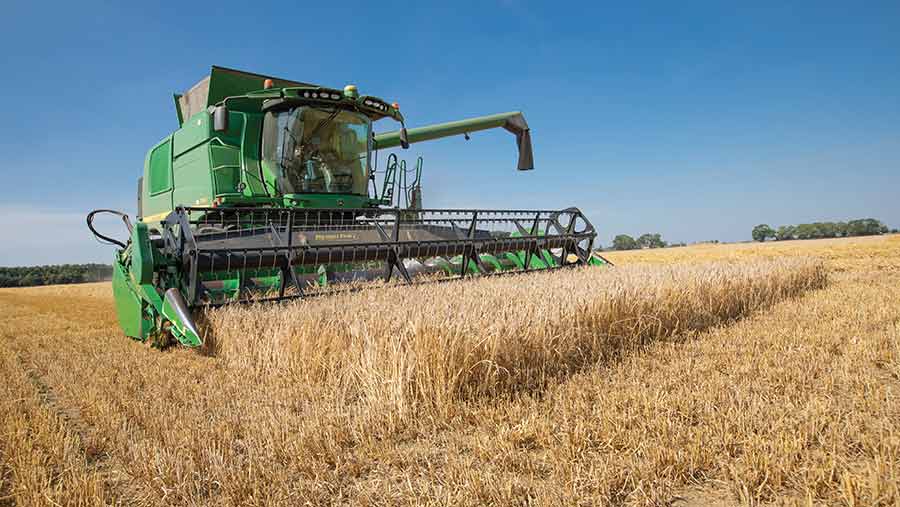Harvest 2023: Wheat and barley grain quality in decline
 © GNP
© GNP Wheat and barley grain quality is sliding following poor summer weather, with yields also proving slightly disappointing.
See also: Harvest 2023: Wheat quality suffering as Hagberg levels fall
Devon
The south-west of England is seeing yields down on previous years, with harvest prolonged by this year’s unsettled weather, according to Duncan Lyon, store manager at Devon Grain.
“Growing predominantly feed wheat, farmers have widely reported that yields have dropped compared with last year. The first grain came to us on 4 July and we are set to have the last load this week,” he says.
Wheat specific weights have averaged 72kg/hl, with moisture levels reading higher than previous years, averaging 17.4%.
The unpredictable weather has driven up energy use with both growers and stores incurring additional costs. “We’ve probably used 10 times the amount of gas we did last year on drying grain,” adds Duncan.
Screening percentages have risen fractionally – averaging 1.97%. Although Hagberg is not normally measured for feed wheat, the small amount tested has been surprisingly high this year.
“None of the grain we’ve tested has been under 240 seconds,” says Duncan.
Kent
Moving to the South East, the harvest story is fairly similar, with yields also in decline. For the premium market there is disappointment, with milling wheat proteins down on the year.
“Our Grade 2 milling wheat has seen proteins of 10-12% compared with 12% and upwards last year,” says Andy Barr, director at Weald Granary. This could be linked with lower levels of nitrogen fertiliser applied to crops.
“Producers have been applying less nitrogen to their wheat this year as part of the lower nitrogen regenerative system,” he says.
With the unsettled weather, moisture levels have also been higher at 15-16% for wheat, and 19% for spring barley. However, Hagbergs have held up well, averaging 300 seconds.
“Harvest hasn’t been as straightforward as last year, but is still well on track. We just got interrupted in the middle,” adds Andy.
North Wales
Moving up into north Wales, the area has had a challenging harvest despite starting on time in mid-July.
Glyn Jones, a contractor from St Asaph, reports that winter wheat kicked off early in the season with dismal yields from varieties such as Dawsum and Extase on light land, but it picked up through the harvest window.
“There were two weeks where we just didn’t get the combine out as the conditions were so bad,” he says.
Oilseed rape had a much better start and helped pick things up, with yields reaching more than 3.7t/ha, while showing a surprisingly low moisture content despite the wet weather.
“My cousin’s rapeseed yielded 4.5t/ha this year, which is brilliant. We haven’t needed to dry any OSR at all this year, so we are very happy indeed,” he says.
Scotland
At East of Scotland Farmers, harvest is continuing at a steady pace, with malting spring barley grown for the whisky distilleries seeing high screenings averaging 5%, with low nitrogen levels averaging 1.5%, and specific weights at 63kg/hl.
Distilleries have raised skinned grain maximum tolerances to 15% to account for the challenging weather, says general manager Robin Barron.
“We’re getting an average of 8-10% skinned grains this year,” he says.
Soft wheats have seen an average specific weight of 75-76kg/hl, with moisture averaging 18%.
“By the end of this week we should be two-thirds of the way through the spring barley, and three-quarters through the wheat,” he says.

